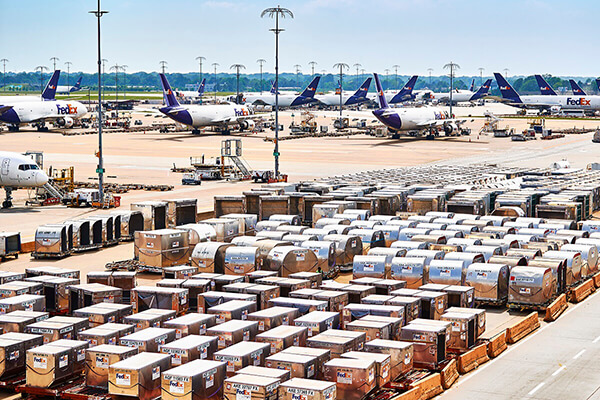5 Steps To A Shockproof Supply Chain
Learn how to structure a best-in-class supply chain that is resilient, smart, and newly fit for purpose in today’s world.
The leap from legacy to modern supply chains has been quite a feat. Globally, logistics has undergone a real sea-change since the 21st century began. Digital disruption has bred innovation. And innovation has vastly improved visibility and compliance in supply chains – but innovation is not just moving products from A to B better than before. Smart supply chains must take into account volatility and risk from a variety of factors, and structure themselves to be shockproof.
In Asia, especially, disruption can manifest in many forms. The last decades have seen natural disasters, virus pandemics, political unrest and geo-political trade tensions within intra-Asia and globally. All of these factors force businesses to review their supply chains, including relocating production and multi-sourcing supply. This requires agile, increasingly integrated supply-chain ecosystems, which in turn, demands collaboration between businesses, governments, and logistics networks – not always an easy task.
So what does a shockproof supply chain look like?
First, it must solve a problem. We have to ask: exactly what is the business problem? Why isn’t it being solved by existing solutions, and how can we structure a supply chain to deliver real value? The business problem of right now may be very different to previous company challenges or financial years gone by.
Second, supply chains must be more adaptive; ready to respond to volatility and risk. 2020 has revealed weak links in supply chains everywhere, with businesses counting the cost. Agility will be the new watch-word going forward.
Third, they must deliver end-to-end visibility, which is intrinsically linked to trust and security. With many companies looking to decentralize supply chains going forward, this has become more important than ever.
Fourth, we are seeing a more personalized customer experience – the emergence of “on demand” supply chains. It’s a trend that will only continue to be pushed to new limits.
Lastly, supply chains must reduce complexity and cost – and deliver operating synergies and efficiencies.
These are all challenge that extends far beyond the digital supply chain. We must constantly deliver new possibilities in the way we structure solutions for customers. For our part, we started out in air express, but new demands and challenges have seen a huge evolution of FedEx offerings.
Our response to be ‘best in class’ today includes a vastly extensive combination of road, ocean and air transport solutions, inventory warehousing and distribution; e-commerce fulfilment; customs brokerage and trade facilitation; not to mention secure payment technology and forward logistics.
Second, supply chains must be more adaptive; ready to respond to volatility and risk. 2020 has revealed weak links in supply chains everywhere, with businesses counting the cost. Agility will be the new watch-word going forward.
Third, they must deliver end-to-end visibility, which is intrinsically linked to trust and security. With many companies looking to decentralize supply chains going forward, this has become more important than ever.
Fourth, we are seeing a more personalized customer experience – the emergence of “on demand” supply chains. It’s a trend that will only continue to be pushed to new limits.
Lastly, supply chains must reduce complexity and cost – and deliver operating synergies and efficiencies.
These are all challenge that extends far beyond the digital supply chain. We must constantly deliver new possibilities in the way we structure solutions for customers. For our part, we started out in air express, but new demands and challenges have seen a huge evolution of FedEx offerings.
Our response to be ‘best in class’ today includes a vastly extensive combination of road, ocean and air transport solutions, inventory warehousing and distribution; e-commerce fulfilment; customs brokerage and trade facilitation; not to mention secure payment technology and forward logistics.
Solutions of the future
Solutions – big data, AI, autonomous vehicles and robotics, to name just a few – are changing the way we structure supply chains to overcome specific challenges and meet the needs of decentralization.
Global growth is increasingly driven by emerging markets, and by 2050, at least 8 of the top 20 economies will be in Asia. And yet, decentralization of supply-chains, especially in response to recent pandemic and trade war shockwaves, seem here to stay. A best-in-class approach will ensure Asia’s supply chains are robust and future-forward enough to weather whatever is around the corner.
For more insights on the new normal across logistics, follow Kawal Preet on LinkedIn here.
Global growth is increasingly driven by emerging markets, and by 2050, at least 8 of the top 20 economies will be in Asia. And yet, decentralization of supply-chains, especially in response to recent pandemic and trade war shockwaves, seem here to stay. A best-in-class approach will ensure Asia’s supply chains are robust and future-forward enough to weather whatever is around the corner.
For more insights on the new normal across logistics, follow Kawal Preet on LinkedIn here.
***



















 The Latest
The Latest